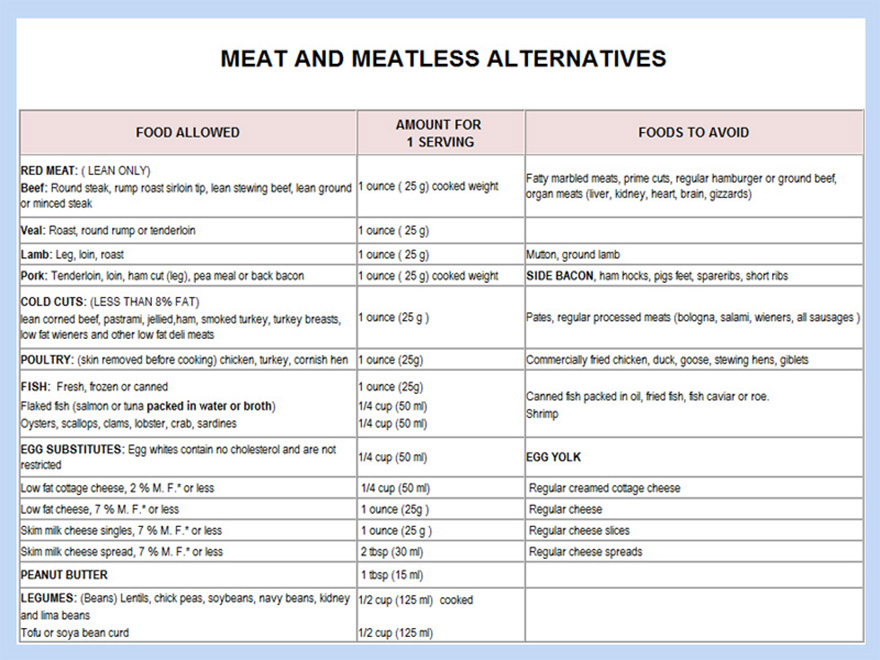Health Pages
Meat and Meatless Alternatives
Meat and Meatless Alternatives
Meat supplies protein and iron but you only need small amounts for your daily protein requirement. By cutting down on the amount of meat eaten daily, you avoid the major source of saturated fat and cholesterol. One serving equals 1 oz (cooked weight, no bones or fat) or 25 grams.
NOTE: Changing what you eat and method of food preparation can reduce significantly your blood cholesterol level. Meatless alternatives are good sources of protein, and are low in fat and cholesterol.

The largest source of fat in our diet is the fat we add to our foods, e.g., butter/ margarine on toast or vegetables, cream sauces on pasta, dressings on salads, mayonnaise, fat used for frying etc. Learn more about fat facts.


